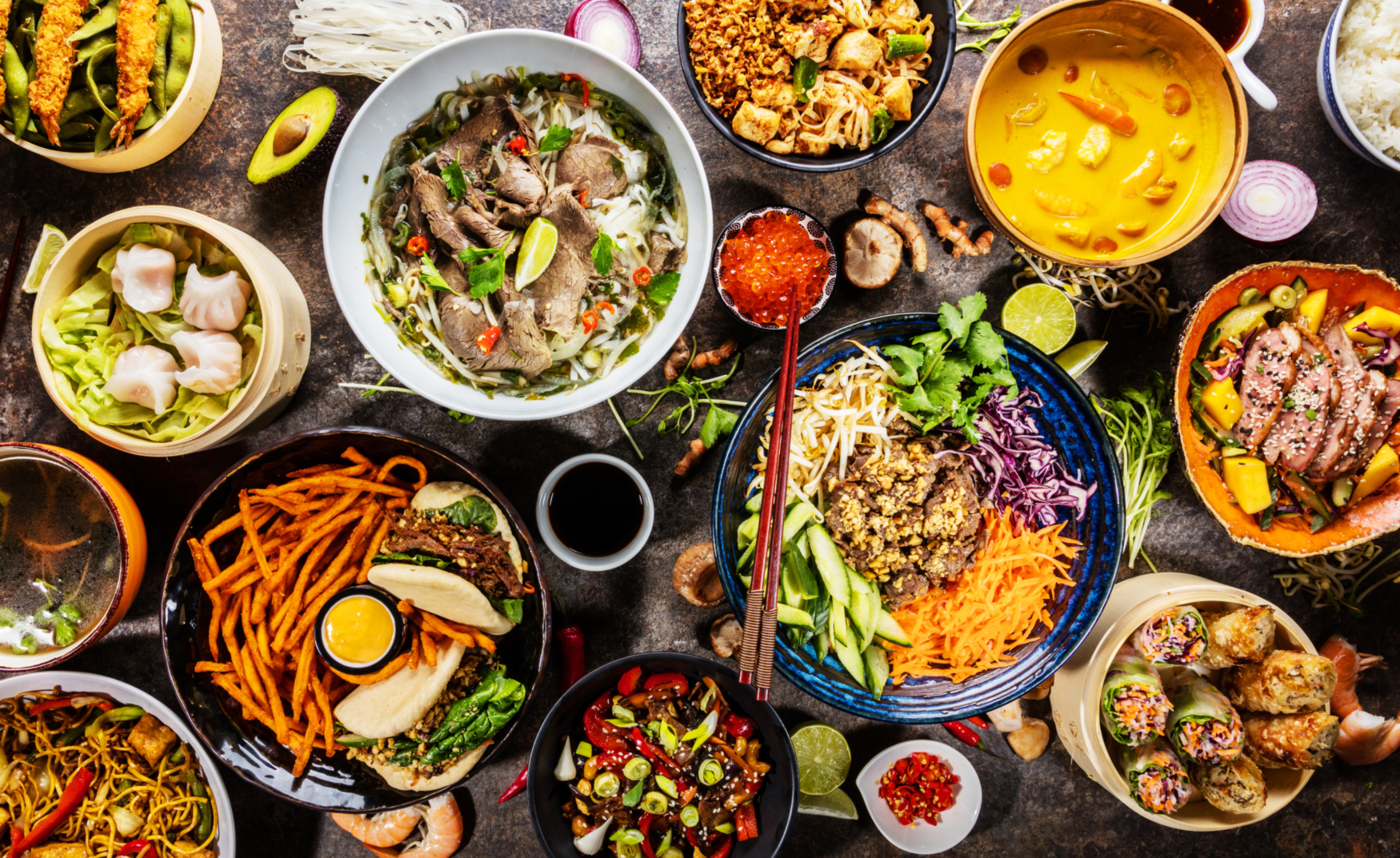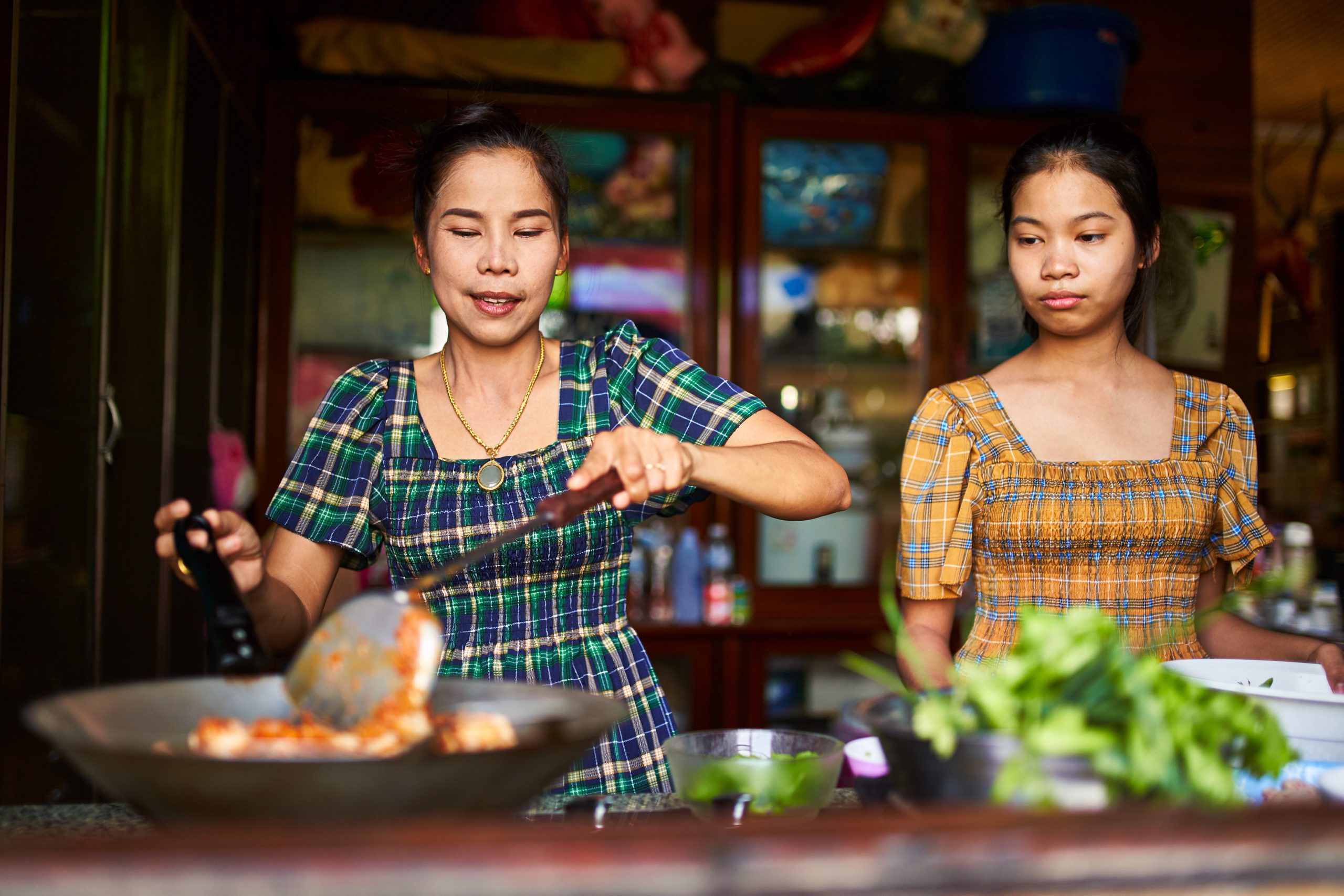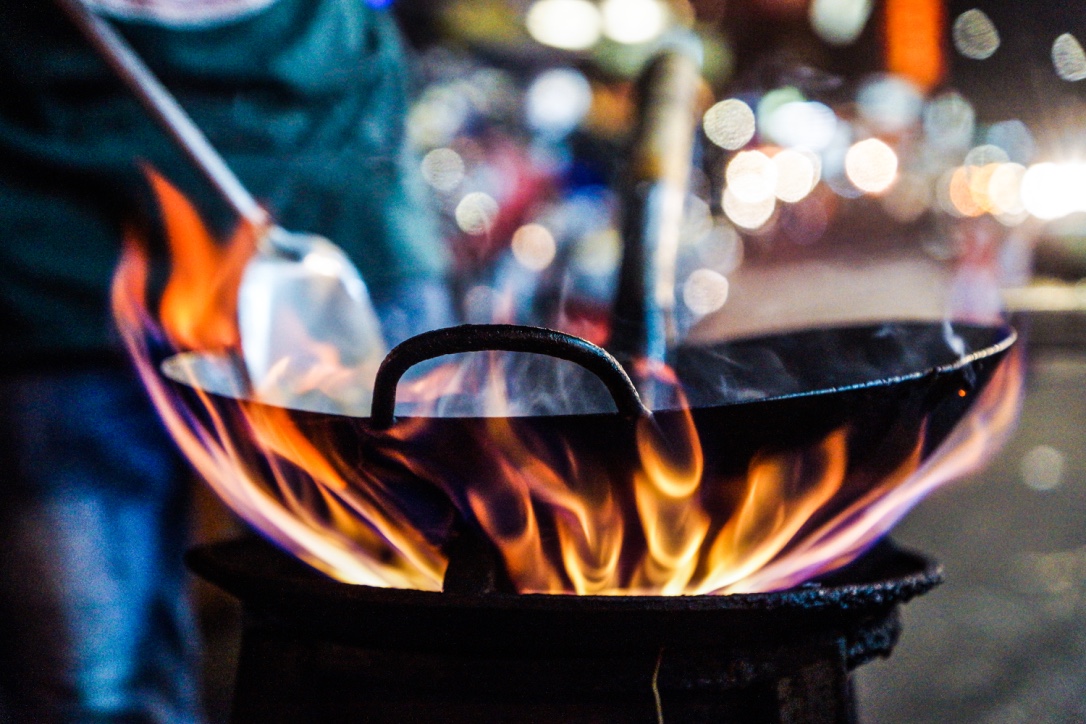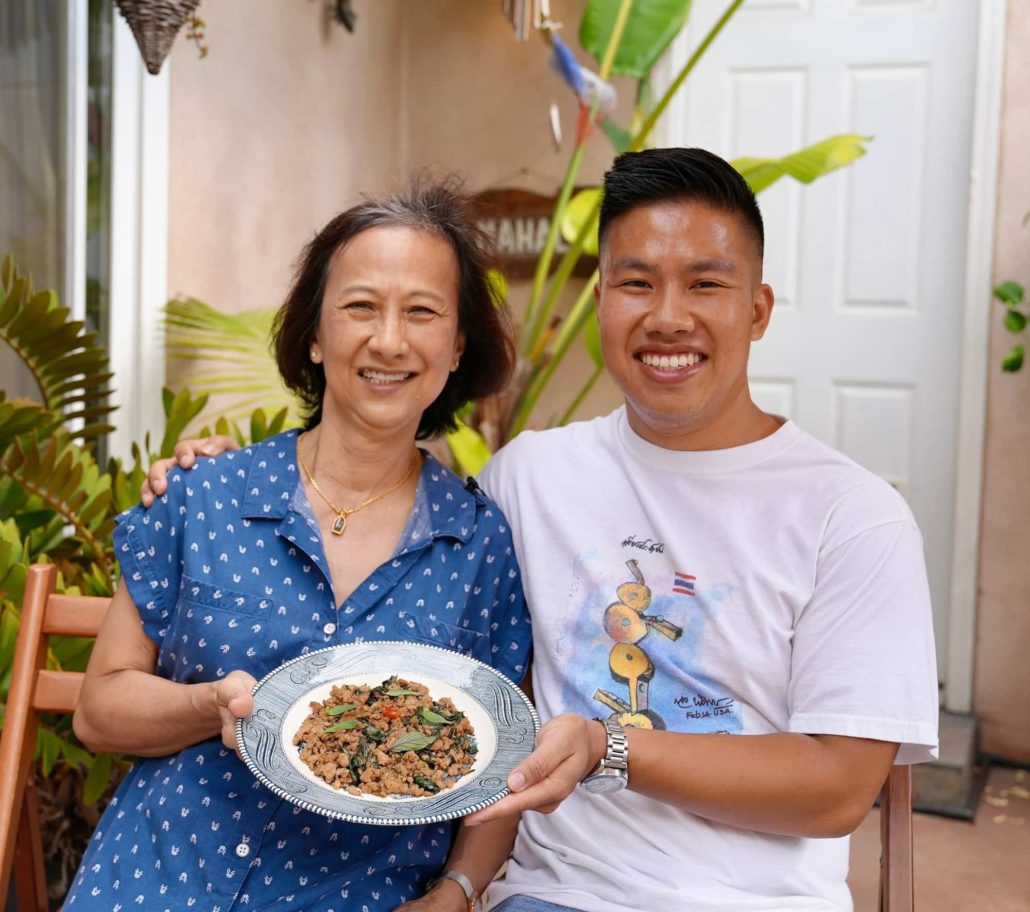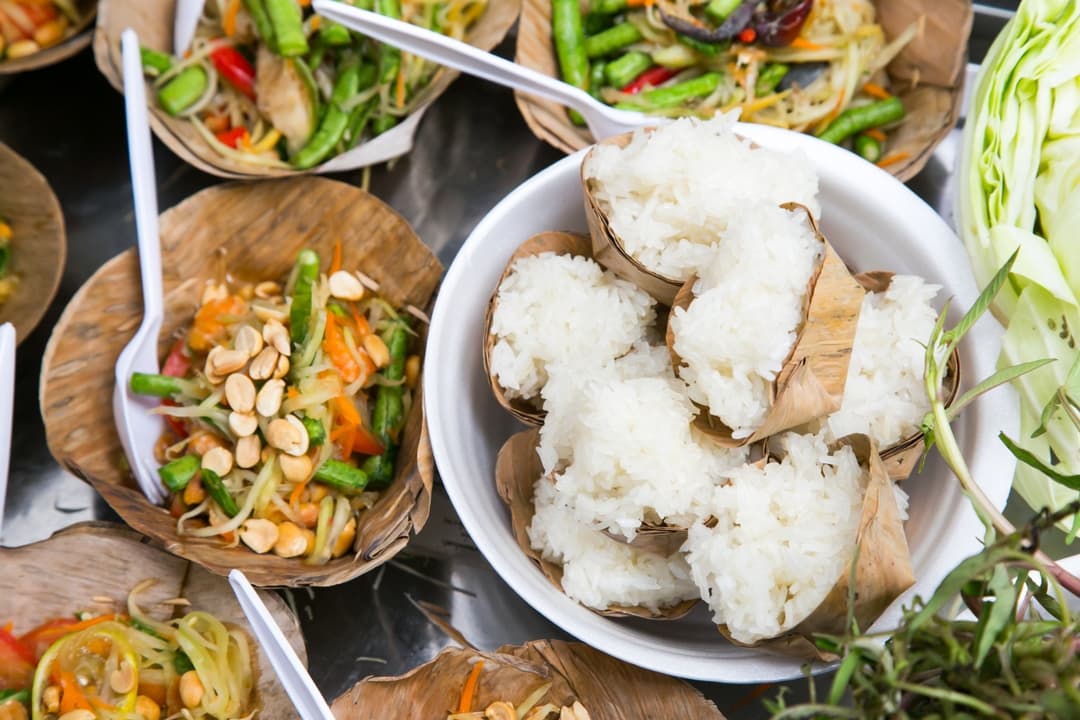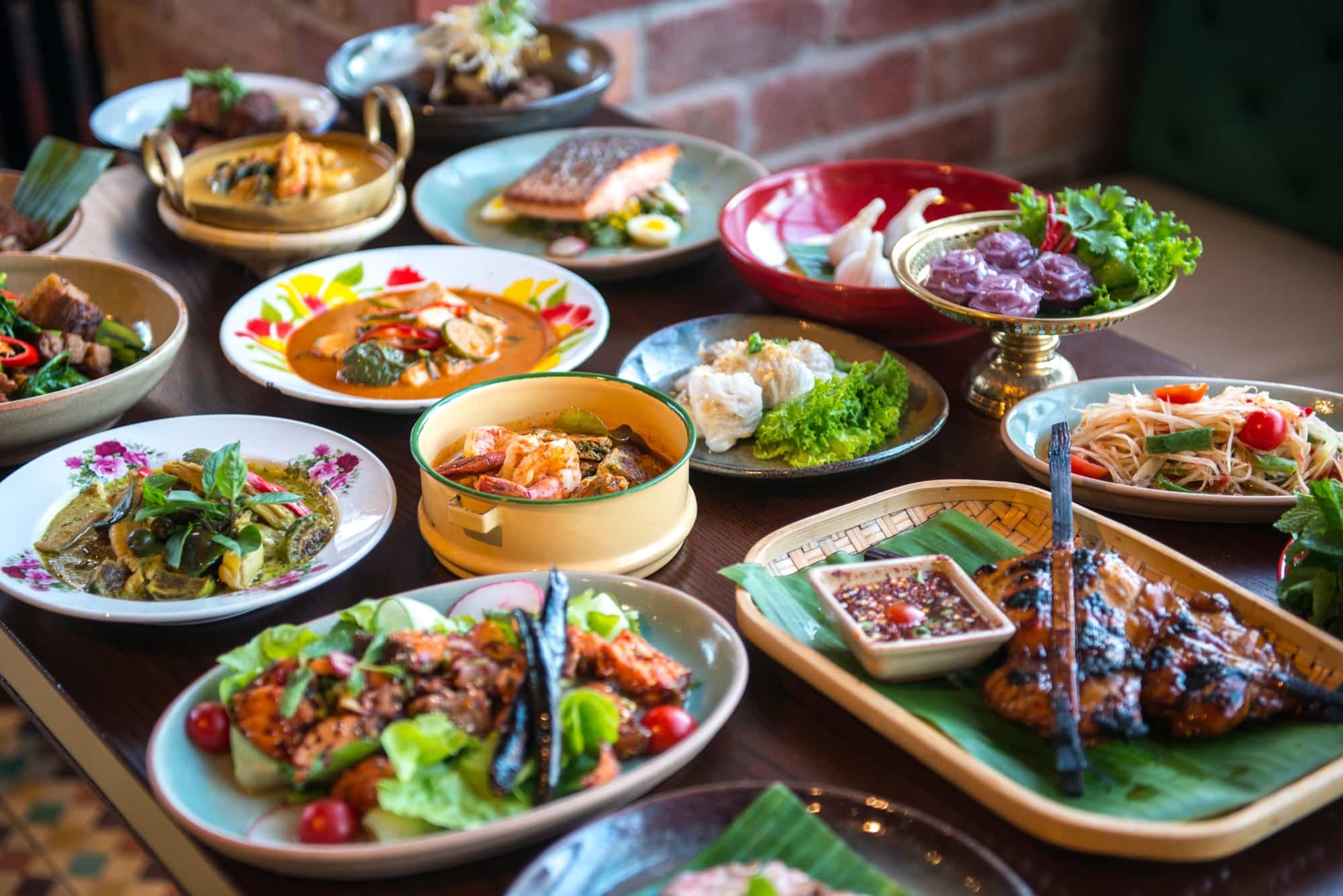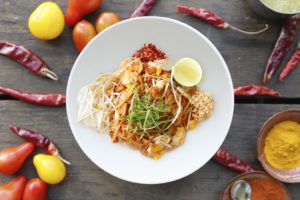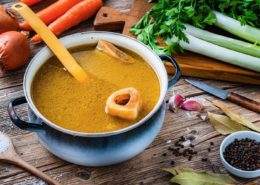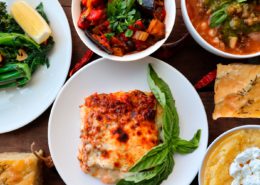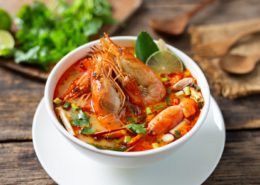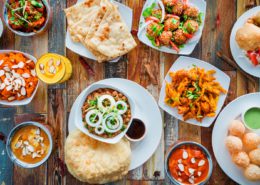Thai Cuisine
Authentic Thai Food
Thai cuisine is like an orchestra of musicians playing in harmony. Many traditional Thai dishes are bold & exciting — often balancing sweet with salty, and acidity with spice. A balanced melody in every dish. This is why the flavors of Thai food are often described as electrifying.
Traditional Thai cooking techniques rely heavily on grilling, stir-frying, and long simmers to achieve deep umami in every dish. The intricacies of Thai cuisine come from the combination of many bold ingredients. Powerful flavors like fish sauce are often offset by lime juice or citrus to add a lip-smacking sourness. Aromatic lemongrass and kaffir lime leaves add intense fragrance to dishes. Finally, signature Thai bird’s eye chilis add a consistent level of spice across many dishes. The harmony and balance in these bold ingredients make Thai food, unlike any other cuisine.
“Thai cooking is about the juggling of disparate elements to create a harmonious finish” — Chef David Thompson
The History of Thai Food
Thailand sits on the southeast tip of Asia. Influenced by both the Indian & Pacific Oceans, the region’s southern cuisine relies heavily on the fresh seafood available. Thailand’s sub-tropical climate is also home to many tropical fruits and leafy green vegetables. Both the rich coastline and tropical agriculture of Thailand have heavily influenced its development.
Thailand neighbors the countries of India, Malaysia, and Cambodia — all of which have mutually influenced one another over the course of centuries. It’s often said that Thai cuisine’s heavy use of spices was passed over from India. Similarly, Southeast Asian countries like Cambodia share in Thai cuisine’s use of fresh herbs and creamy coconut milk.
As a result, depending on which region of Thailand you’re exploring, you’ll notice subtle nuances in flavors. In the South, dishes like Nam Prik Goong Siap (Spicy Fermented Shrimp Paste) or Mee Hoon Gaeng Poo (Spicy Curry with Crab) lean into the use of chilis and fresh herbs. The North is known to use less spice and milder ingredients — take for example the Northern Thai dish, Miang Kham (Betel Leaf Wraps), where dried shrimp, lime, and garnishes are wrapped in wild betel leaves. The rich cultural influences of Thailand’s history can be experienced in every Thai dish. Time to eat!
Thailand’s Culinary Diplomacy (Fun Food Fact)
Ever wonder why there seem to be so many Thai restaurants in the US? You’re definitely not just imagining it — the Thai government funded this. In 2001, the Thai government established an effort to promote Thai cuisine & culture in foreign countries. Plans were made to train chefs at culinary institutes abroad and fund Thai restaurants & food suppliers. In a few years, many cities all over the world saw an increase in Thai cuisine & recipes. The United States alone, has more than doubled its number of Thai restaurants since the program started. It probably helps that Thai flavors are often said to match the American palate in the perfect way.
Ultimately, This initiative was a huge success for the Thai government and the global proliferation of Thai cuisine & culture. The ubiquity of Thai cuisine in American culture has shifted the way we think about flavors & recipes. The story of Thailand’s culinary diplomacy is nothing short of remarkable — it truly proves that good food transcends all borders and has the power to influence the world.
Homemade Thai Cuisine
“We’ve done an amazing job of using the ingredients we have, we don’t use the most fancy ingredients, but we never fall short on flavor. We adapt to what we’re given.”
On What Makes Thai Cuisines Unique
To me, Thai cuisine means a lot of flavor, I think a lot of people know Thai cuisine to be very spicy but it has a lot more depth of flavor than just spice, from salty to sweet to sour to umami. Every element of those tastes gets displayed in our food. Even in our language they’ll say things like “Waan Nam, Kem Thaam,” meaning that sweetness leads and the saltiness follows. This is done with any combination of flavors.
In American culture, we always see commonplace Thai food like Pad See Ew and Pad Thai on menus, but in Thailand, as with any country, the cuisine is very regional. Up north, you’ll have more of the staple curries, like Khao Soi, heavily influenced by Muslim/Indian cuisine, in the northeast region, Isaan, it is heavily influenced by Laotian cuisine, and Lao is actually where a lot of our spice originates from. The Lao people don’t get a lot of credit on a global level, but it’s important to acknowledge because Lao and Thai food have really been closely intertwined.
Southeast Asian cuisine hasn’t been elevated as much as East Asian cuisine has, I want people to recognize it’s something just as special as a 5-star restaurant because there is that much love, and time, and effort put into each and every meal.
“For Thai people, food eating is a very communal experience. Rice will almost always be at the basis of the dinner, so much so that the dishes that accompany are called Kub Khao, which literally means “with rice.”
The Thai Dinner Table
Our jasmine rice is known around the world and is the true essence of Thai food. You will find a rice cooker in every Thai household because they cook it every single day.
On our family’ dinner table, there would always be either a veggie dish and a meat dish or a one pot dish like a curry or noodle soup, always prepared by my mom, who taught me everything I know. The awesome part about Thai food is that the flavors are so complimentary and transformable.
At roadside stands in Thailand, the aunties will be cooking up dishes like som tam (papapa salad) and they’ll essentially ask you how you like it, “do you like it spicy? Do you want it sweeter? More salty?” And then they would adjust those flavors for you. The Thai palate is very diverse and transformable in that way, flavors can be adjusted to the eater. At our dinner table, it is the same, we will have Krueng Plueng, which are the condiments on the side: prik pon (chili flakes), nahm prik nahm plaa (fish sauce), nahm prik nahm som (chili vinegar), and nahm thaan (sugar).
Find Local Thai Shefs & Meals
When searching for Thai cuisine near me, you’ll find Shef delivers Thai food in the following locations:
- Seattle
- Los Angeles
- San Francisco (Bay Area)
- Chicago
- New York City
- New Jersey
Find your local home-cooked Thai food today!

